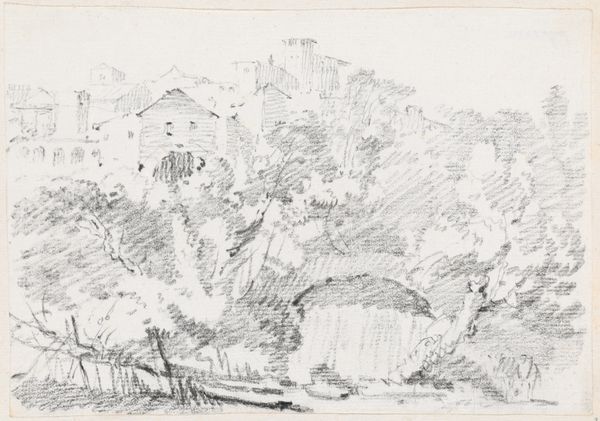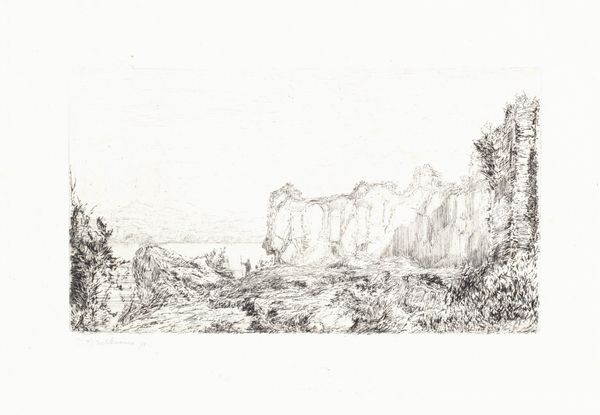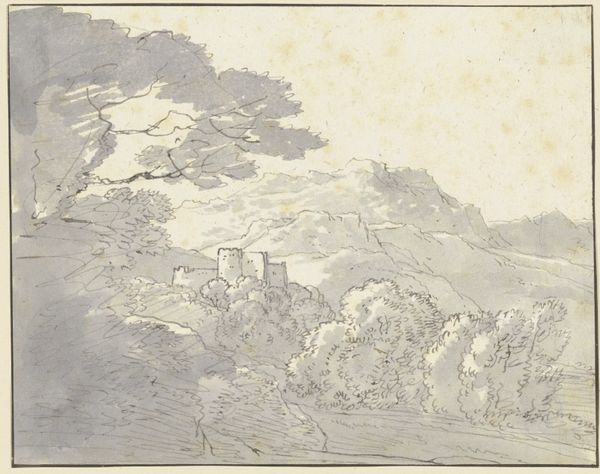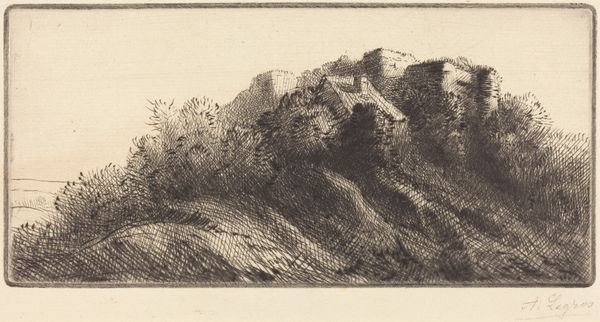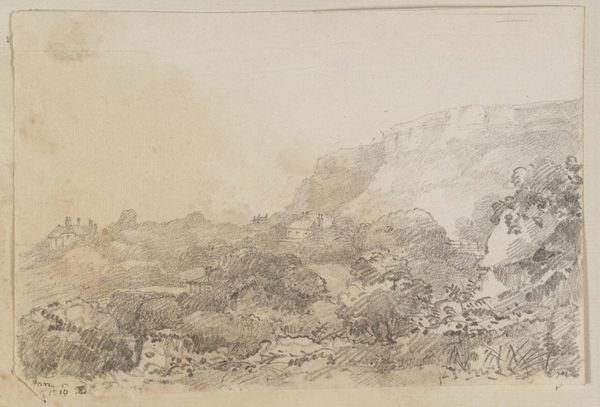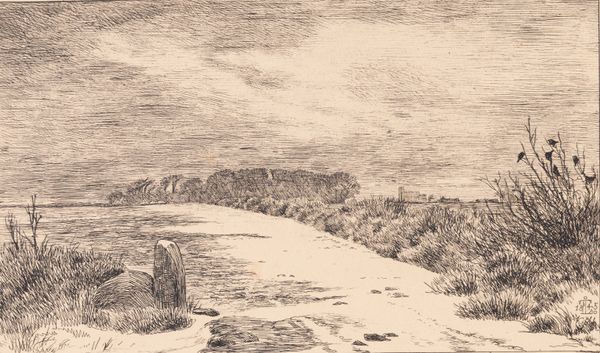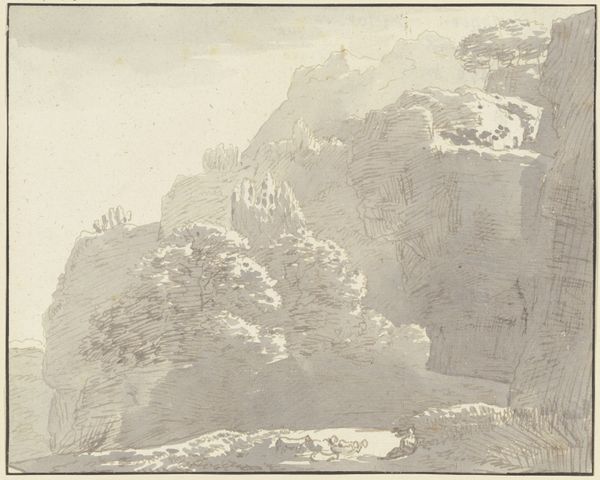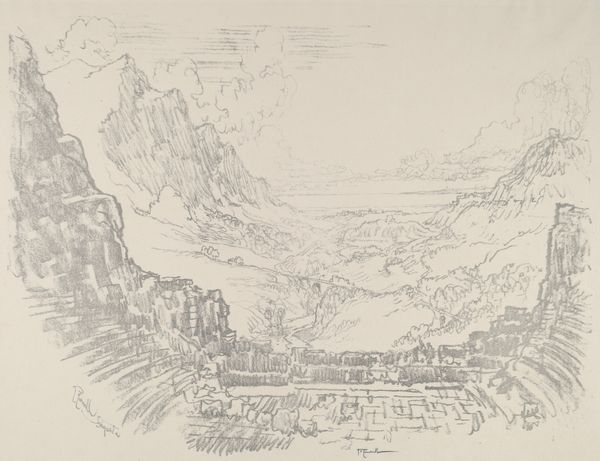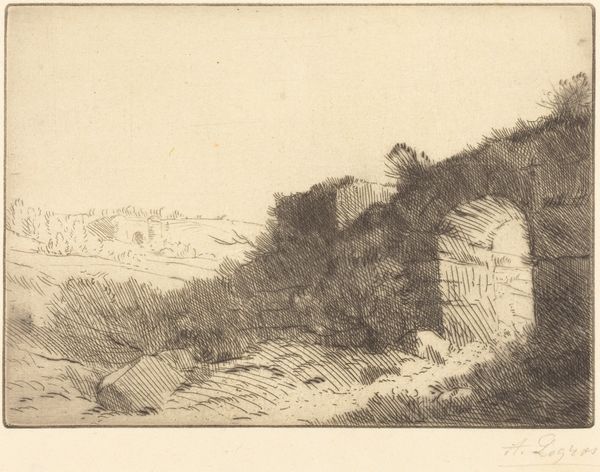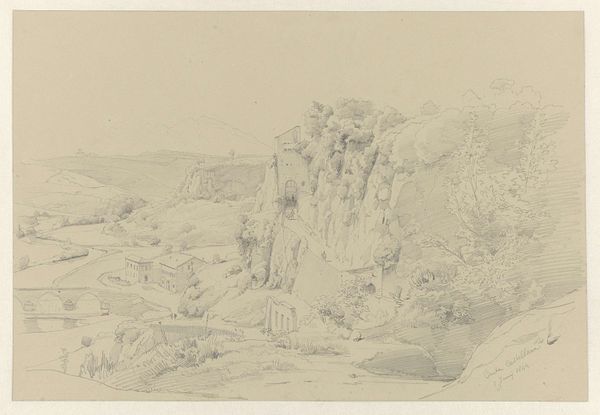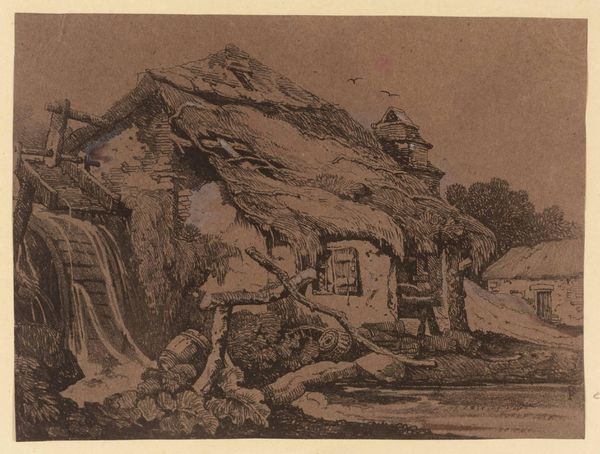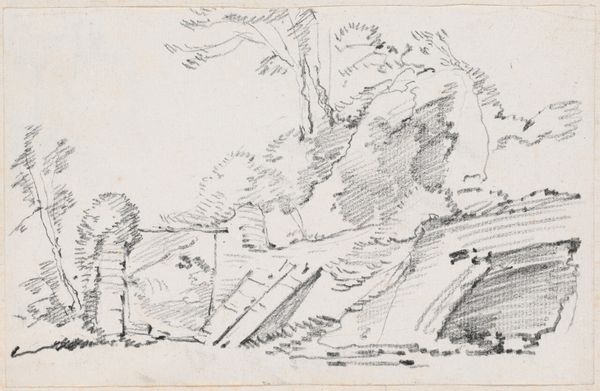
Copyright: Public Domain: Artvee
Editor: Here we have Joseph Wright of Derby's "Ruined Roman Tower in a Landscape," done around 1774-1775, using pencil and watercolor. It’s a pretty muted scene. What immediately grabs me is the tower itself. How would you approach looking at this work? Curator: I’m immediately drawn to the *materials* used, and how those materials might inform our understanding. Watercolour, pencil – relatively inexpensive and easily transportable. This speaks to the evolving market for art and accessibility during that period. It wasn’t about the wealthy commissioning grand oils all the time. It signals new patrons, perhaps from the emerging middle classes with a desire for picturesque landscape views. Think about what it meant for art production! What do you think that tells us about artistic patronage and labor then? Editor: That’s fascinating! It points to a broader audience and potentially a democratization of art. Maybe artists were less reliant on the elite and could cater to different tastes and even make more "art for art's sake"? Curator: Exactly. And consider *why* a ruined Roman tower? It fits the Romantic fascination with ruins, of course. But also, what was happening socio-economically? England was rapidly industrialising, changing the very landscape around people. Nostalgia for a perceived 'past' and critiques of modernization find their way into Wright’s landscape work in interesting ways. How does seeing the material context change how you interpret this piece? Editor: I see the tower less as just a scenic ruin and more as a symbol of a changing society and anxieties about progress. The artist, through readily available material, speaks of larger production means. I also noted how the grey-toned vegetation could evoke a feeling of the ordinary masses, unlike the grandeur of Roman empire Curator: Precisely! By analyzing Wright's artistic tools and their role, one gains insight not only into aesthetics and creation of picturesque landscape but into cultural commentary of that moment, also bringing in considerations of labour beyond Wright's. Editor: I didn't think I would walk away thinking about material realities like artistic labour and consumerism when looking at it, but now that makes all the difference! Thanks.
Comments
No comments
Be the first to comment and join the conversation on the ultimate creative platform.
